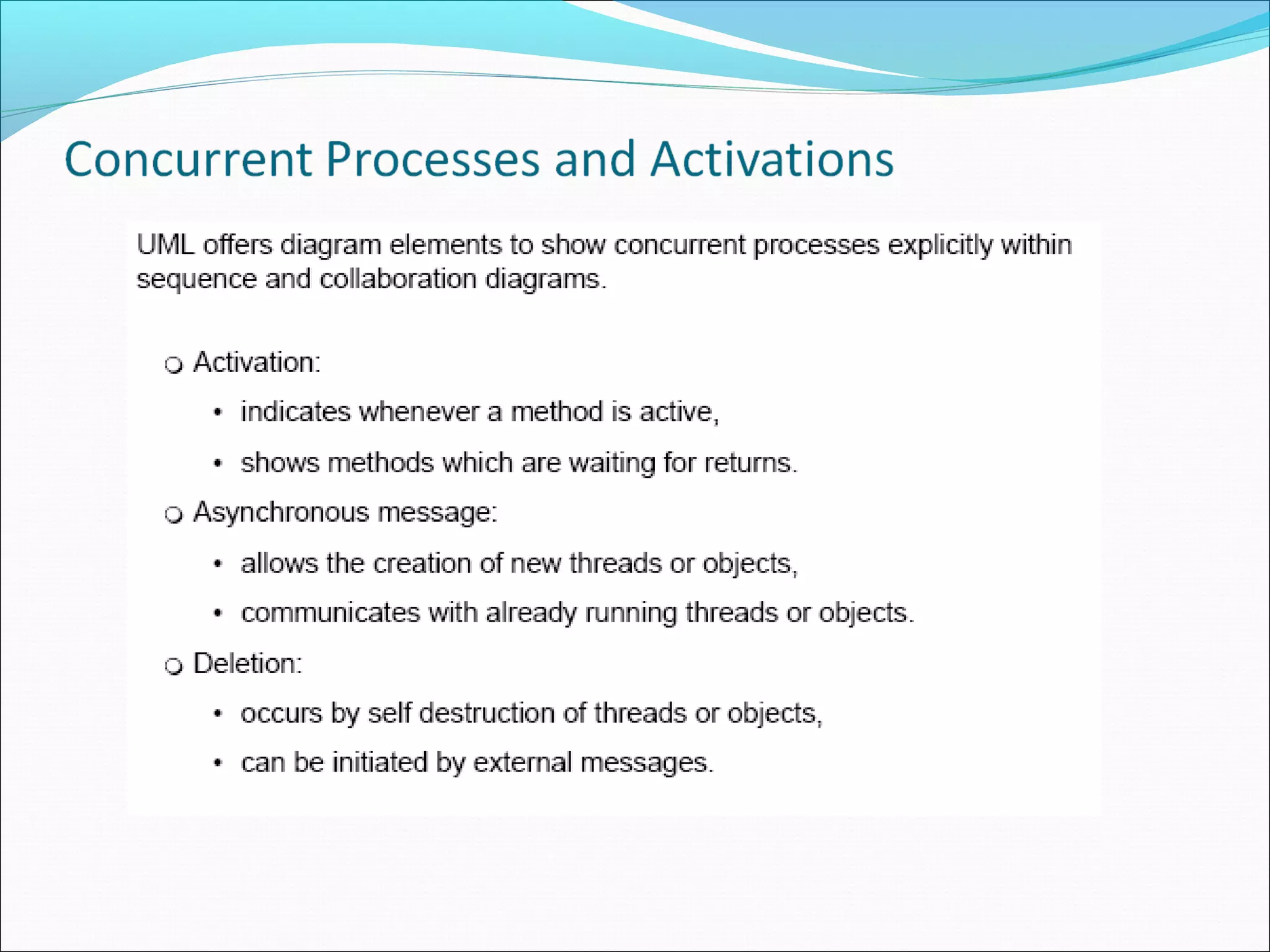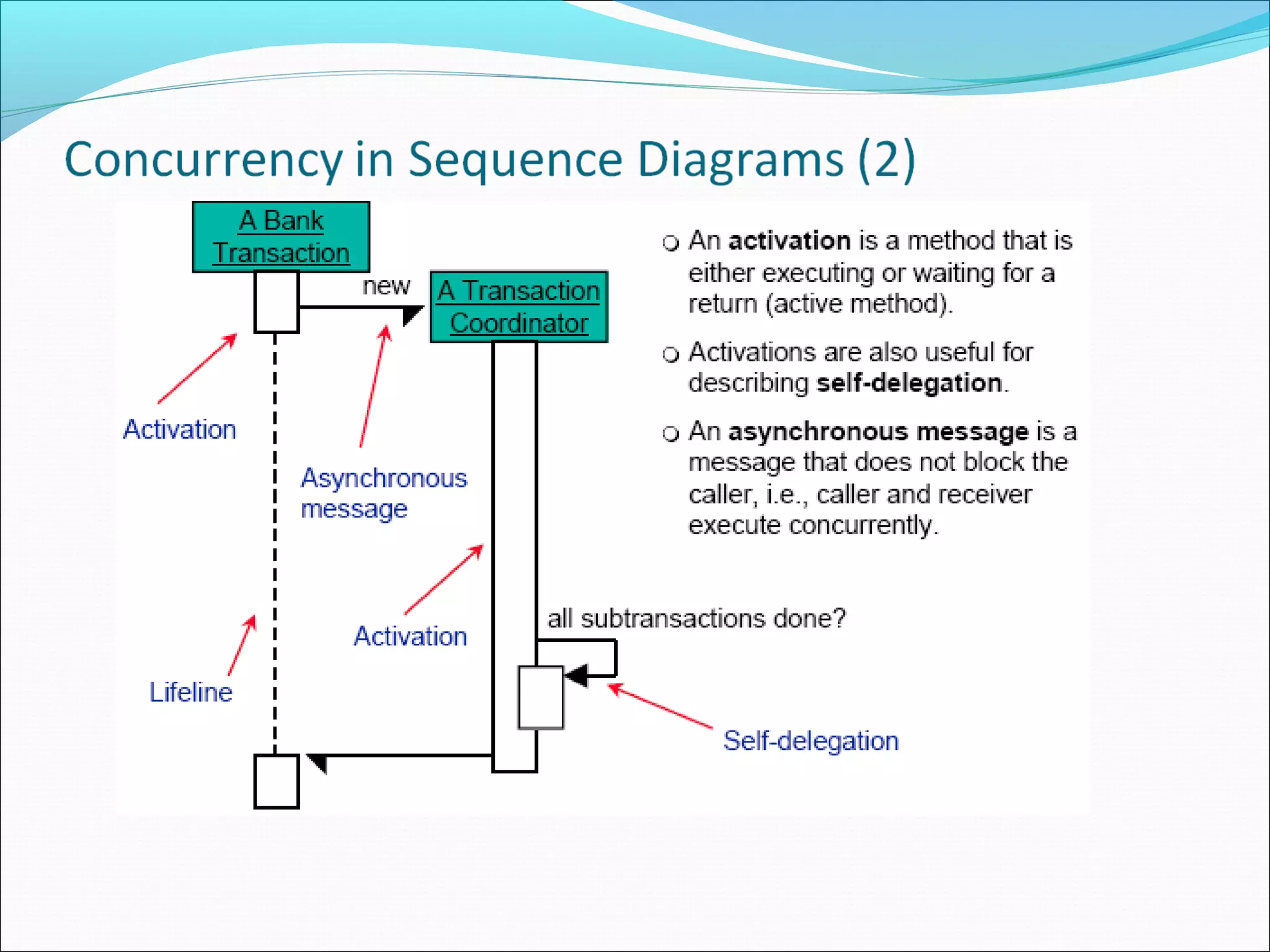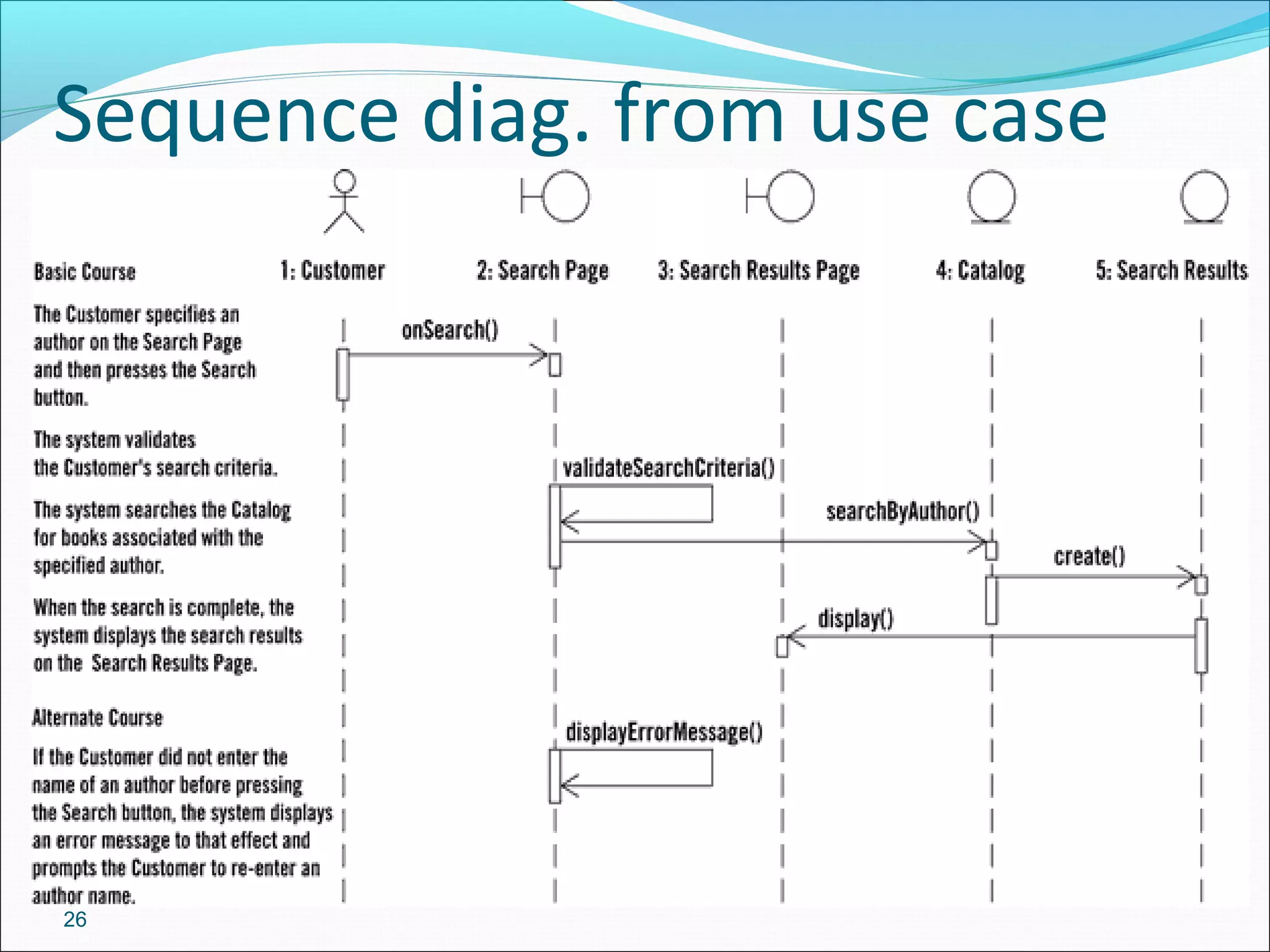The document discusses interaction diagrams, which describe how objects collaborate in behaviors. There are two types: sequence diagrams emphasize order of interactions, while collaboration diagrams emphasize interacting objects. An example sequence diagram is provided showing the behavior of an "order" use case, where a customer orders products and the system checks stock and reorders if needed. Guidelines are given for drawing sequence diagrams, such as naming objects, representing messages and returns, and indicating loops and conditions.

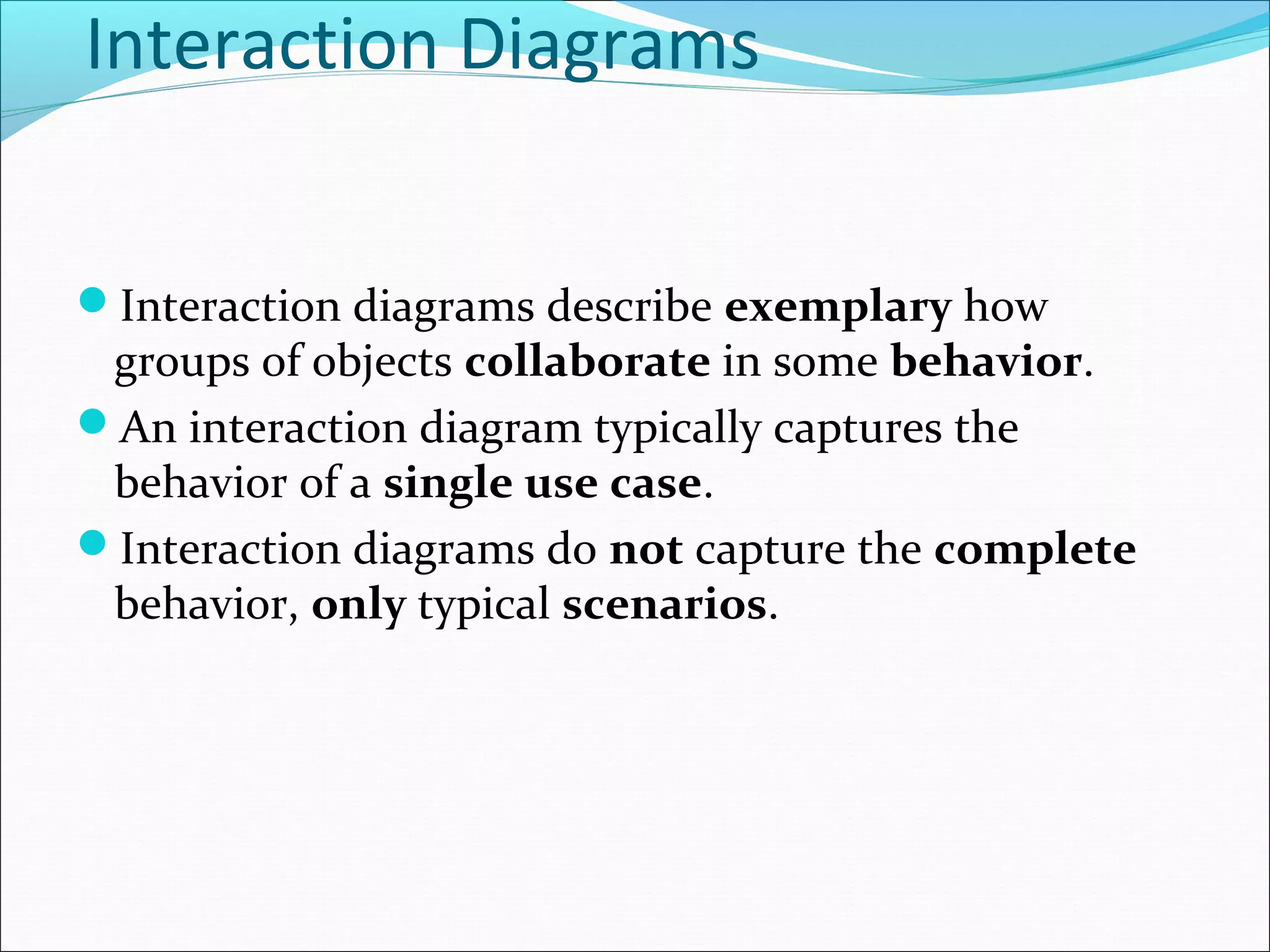



![Object
Object naming:
syntax: [instanceName][:className]
myBirthdy
:Date
Name classes consistently with your class diagram
(same classes).
Include instance names when objects are referred
to in messages or when several objects of the same
type exist in the diagram.
The Life-Line represents the object’s life
during the interaction](https://image.slidesharecdn.com/ooadsequencediagramlecture-121115081451-phpapp02/75/Ooad-sequence-diagram-lecture-6-2048.jpg)

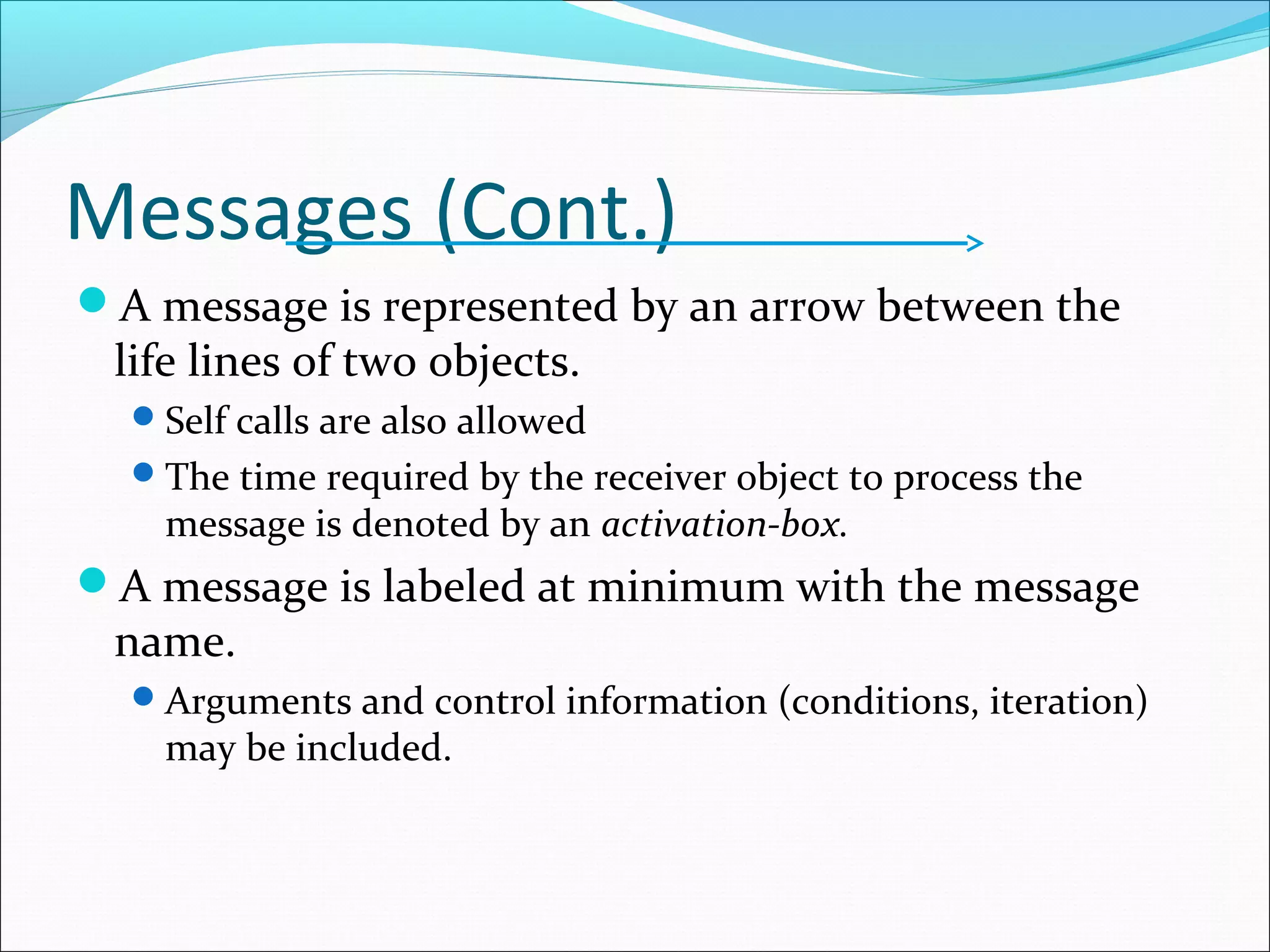


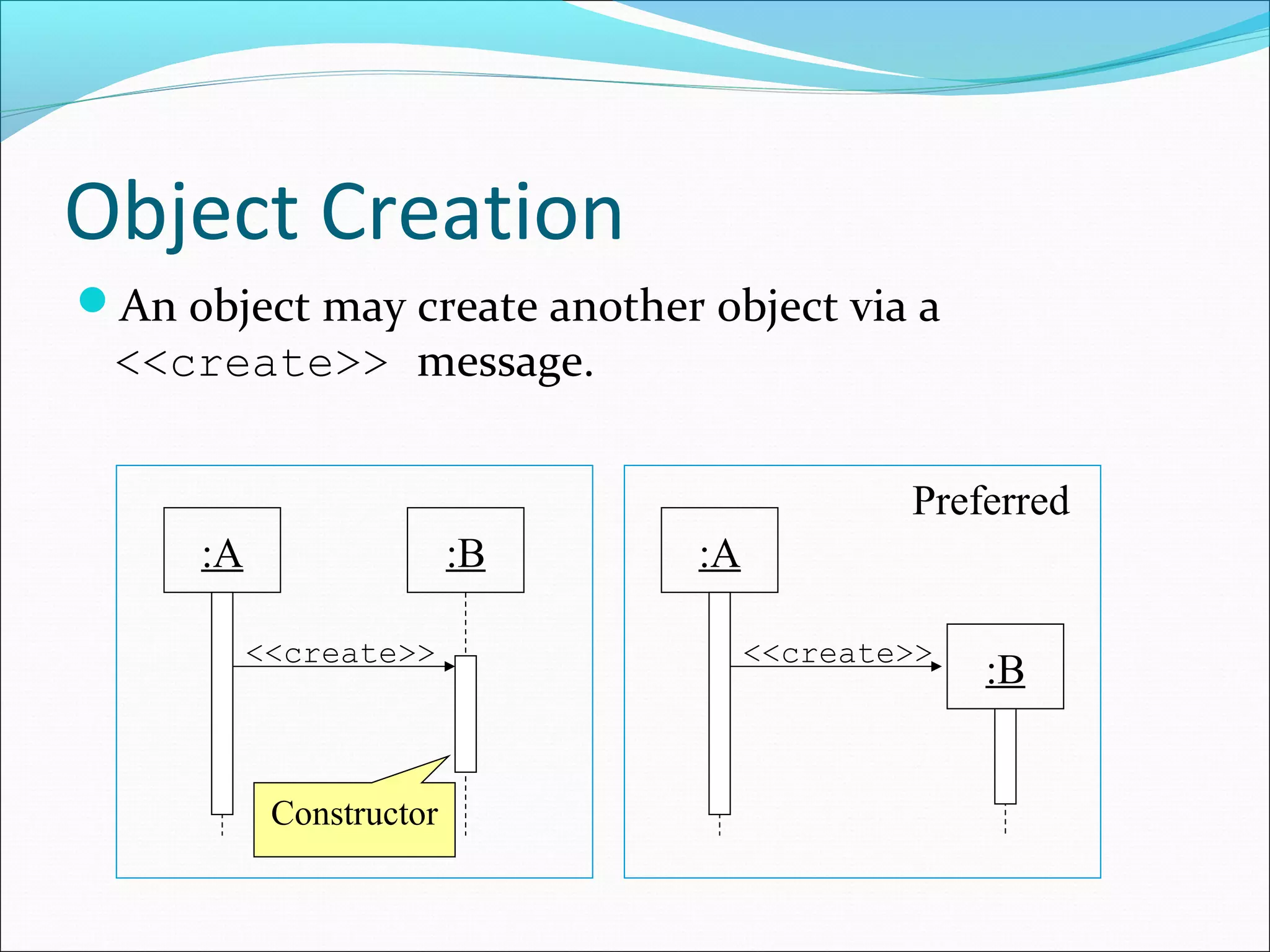

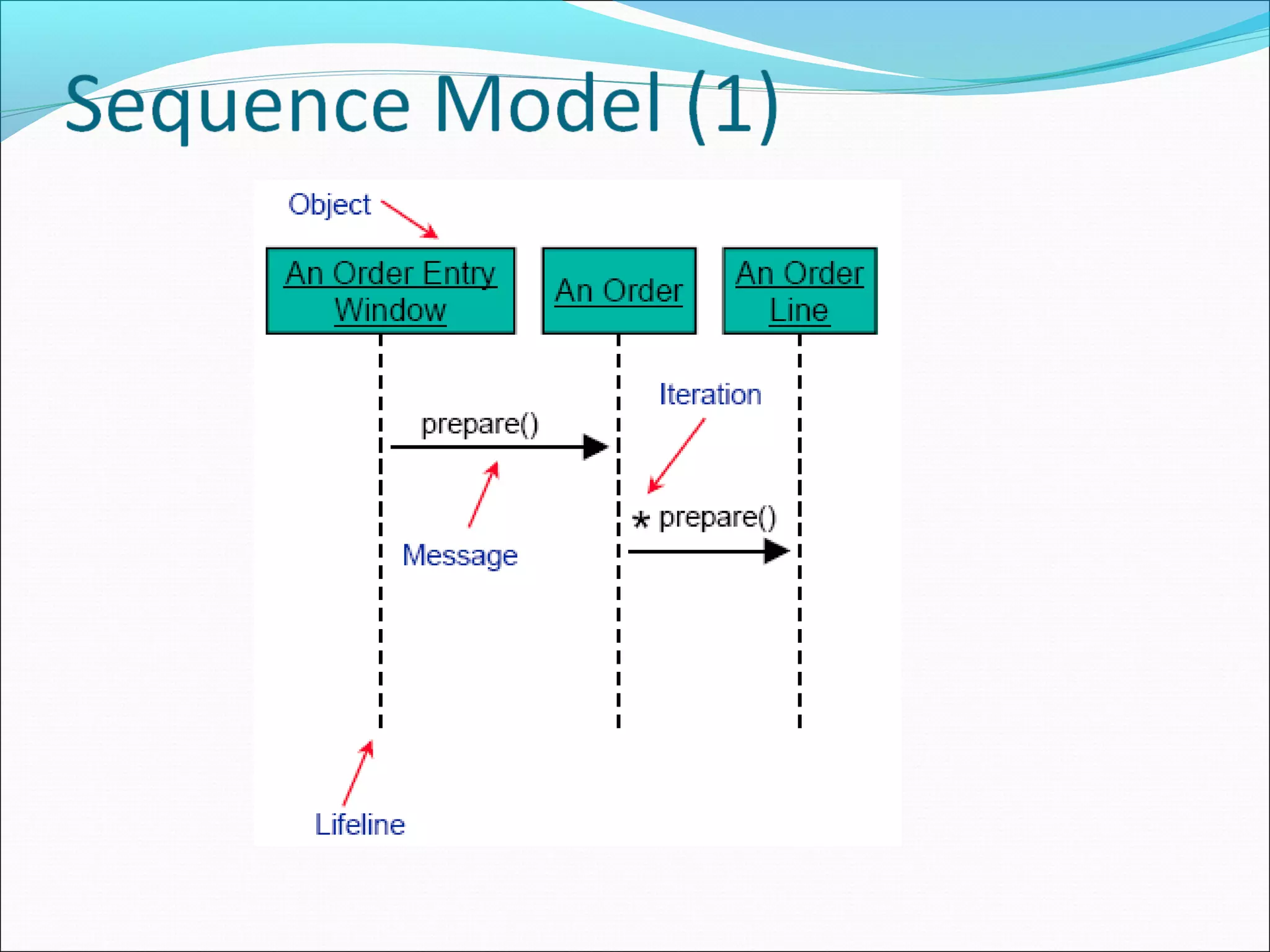
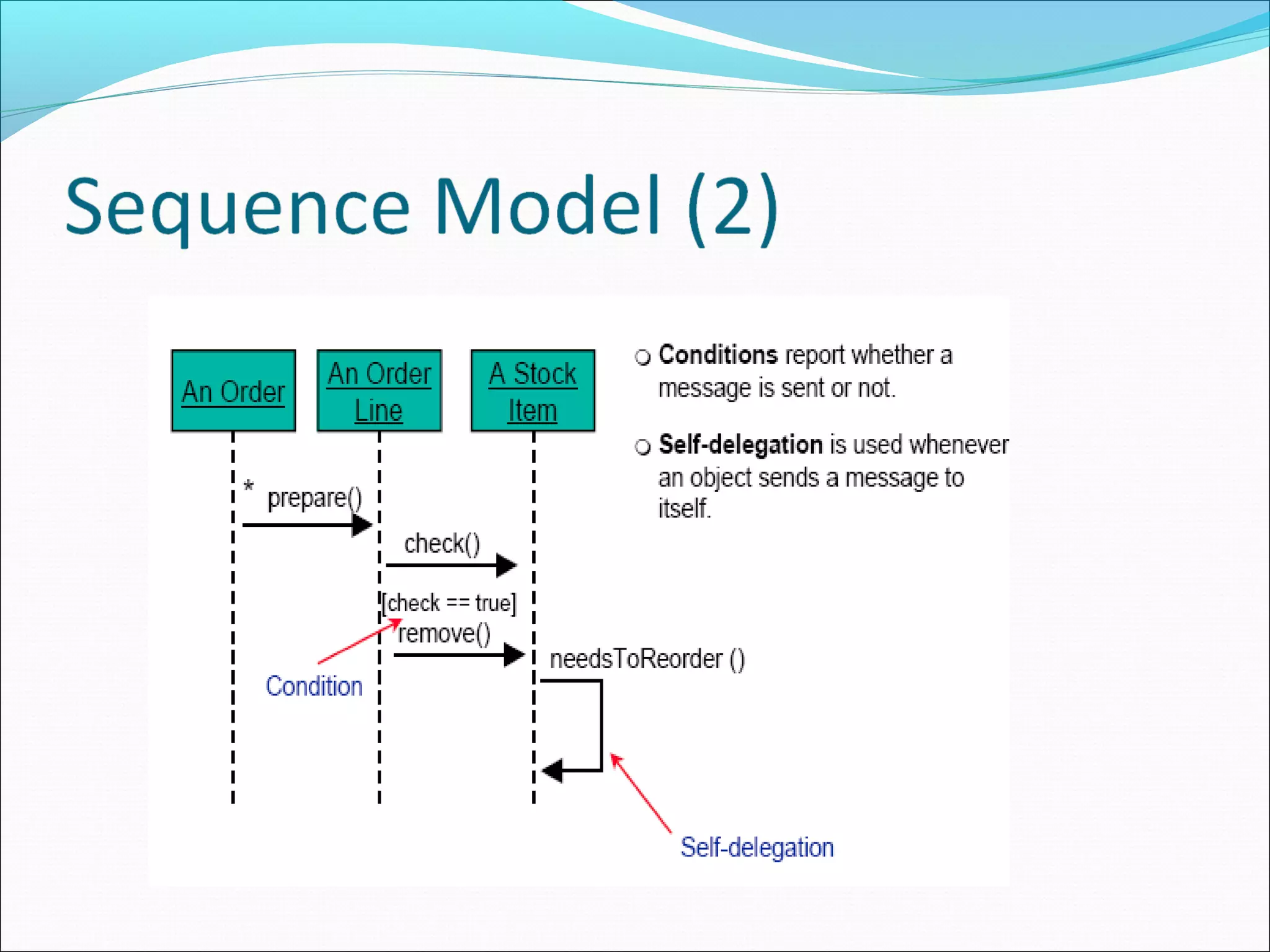




![Indicating selection and loops
frame: box around part of a sequence diagram to
indicate selection or loop
if -> (opt) [condition]
if/else -> (alt) [condition], separated by horiz. dashed
line
loop -> (loop) [condition or items to loop over]
opt [balance 0]
<> alt [balance 100 ]
< .00
[balance 100 ]
>= .00
loop [balance 0]
<
19](https://image.slidesharecdn.com/ooadsequencediagramlecture-121115081451-phpapp02/75/Ooad-sequence-diagram-lecture-19-2048.jpg)
